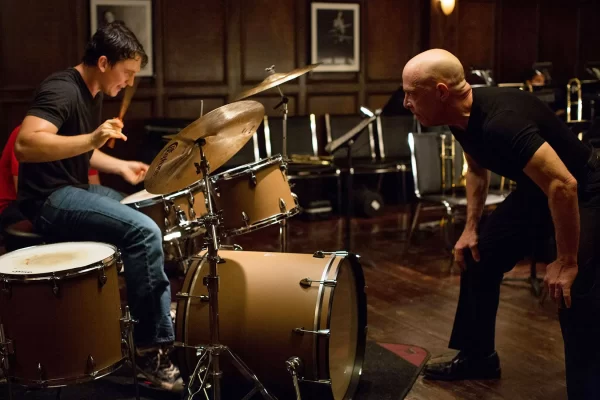The Police Force and Mental Illness – Let’s Talk About It
The Fatal Force Database reports that of the 6032 (as of 2015, updated Feb. 9, 2021) that have been shot by police, 1397 (23%) experienced some sort of mental illness
A loss of stability and sensibility leaves those who are mentally ill not only vulnerable to crime, but mistreated when it comes to why.

It’s no surprise that the police system stings with bias and a shocking lack of training, but how does this relate to those who suffer from mental illnesses? According to the Prison Policy Initiative, 37% of people who were in federal prisons had been diagnosed with some sort of mental disorder, and the percentage of people who weren’t receiving mental health care was 69% out of 591. While this percentage seems selective, the treatment of the mentally ill is most certainly a widespread issue in police officers, as well as from workers in jails and in prisons.
On September 9th, 2020, 13-year-old Linden Cameron was shot by police officers after his mother had called 911. Police were called as a “violent psych issue”, though the young boy with Aspergers’ Syndrome just didn’t know how to respond to his mother returning after a year being gone.
After Linden ran from the address, police shot him.
Linden was reported to have not had a weapon, was a child, and had no intent to hurt anyone. He’s one case of many mistreated by police officers because these law enforcers aren’t properly trained to deal with cases like his.
Saraya Rees was 14 when she was arrested on counts of attempted murder and arson. Shannon Rees, her mother, said her daughter poured a small amount of gasoline on the ground in front of her parents’ bedroom. It is believed that she was in psychosis when she did this, a reaction due to a withdrawal from antidepressants. Saraya’s mother claims that her parents called the 24-hour Crisis Team at Coos Health and Wellness. Instead of helping the girl amidst a mental breakdown, they called the police. The police stormed their home with firearms drawn and handcuffed Saraya in front of her family. Saraya was in deep psychosis during the police investigation, a fact that should not be ignored concerning the validity of her response.
Symptoms of psychosis include but are not limited to hallucinations, incoherent speech, agitation, and intrusive thoughts. Typically during an episode of psychosis, the patient is not aware of their actions.
Mental illness is not a justification for a crime. It is a rationale.
Police officers are mandated to take a 40-hour training course called Crisis Intervention Training (CIT) in every state excluding West Virginia. Officers dedicate 40 hours of their 13-19 week training to dealing with mental illnesses, a shockingly low period of education considering a study from the Treatment Advocacy Center states that those with undiagnosed mental illnesses are 16 times more likely to be killed by police. It is easy to see that the 40 hours of training simply is not enough considering the obviously flawed treatment of the mentally ill.
While there is training that simulates what it feels like to be mentally ill, like officers hearing voice-overs of voices similar to what a schizophrenic would hear, it’s still hard to distinguish for most people what differentiates someone mentally ill committing a crime from someone without a mental illness.
The treatment of those with mental illness has certainly improved over the years, but there’s still work that needs to be done in the treatment of the mentally ill by police and the criminal justice system. So many workers have a lack of training that leaves them fatally unaware of just how much of a factor mental illness can have in a person committing a crime, and how mental illness is not a choice. Even without the complete knowledge of what it is like to be mentally ill, officers still need training in properly handling a situation where someone is mentally unstable. Blindly throwing a mentally unstable individual into jail without distinction is counterproductive and paves the way for further bias against those with mental illnesses.
People will make assumptions based on how the police force, a system built on the ideas of justice and right from wrong, reacts to certain situations. If someone with a mental illness is convicted of a crime and thrown into jail, it will skew the perspective and dig an even deeper hole against mental illness. What needs to happen to prevent this from occurring again is more training for police officers in the field of mental health. Teach future-officers not just how to treat criminal situations, but why they commit crimes in the first place. While mental unwellness is not always a factor, the percentage of those who do fall into that category is substantial and important in how police react to those situations. By not just treating the situation with more care, contacting the proper authorities like mental health professionals, while police should be involved, they need to deescalate the situation – not pour gasoline on the fire.
Of all the professions that interact with the public around the clock, the police force is of the most vital to be able to properly handle diverse situations. Not everyone can be handled the same; a robbery simply doesn’t compare to a mental breakdown or episode. By treating them as such, the weight that those with mental illnesses hold becomes debilitating. How are they supposed to react to a force that just isn’t willing to provide a proper de-escalation of a situation, treating them as brutes and criminals?
In the end, it’s so important to give those who are mentally unwell the care that they deserve – a jail cell can’t cure a mental illness.
You can’t fix trauma with force and isolation.








Deanna S Young • Mar 13, 2021 at 3:02 PM
This is so true. If a person is treated like a crimina, they will act like one. Try to acknowledge that they are different and treat them that way. It is a shame many police shoot their guns before knowing all the circumstancesl